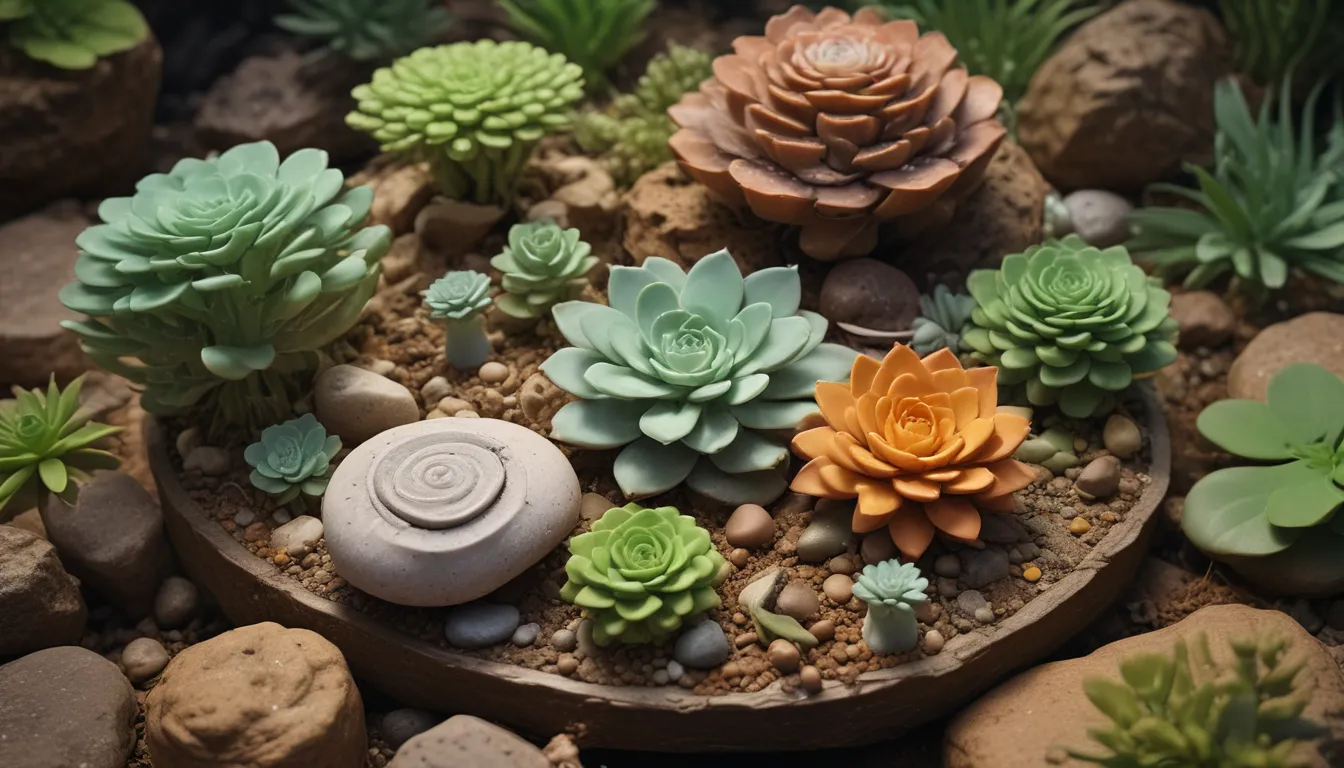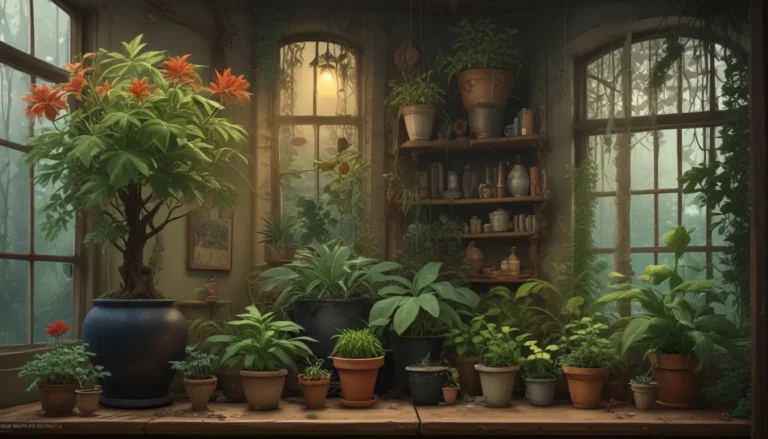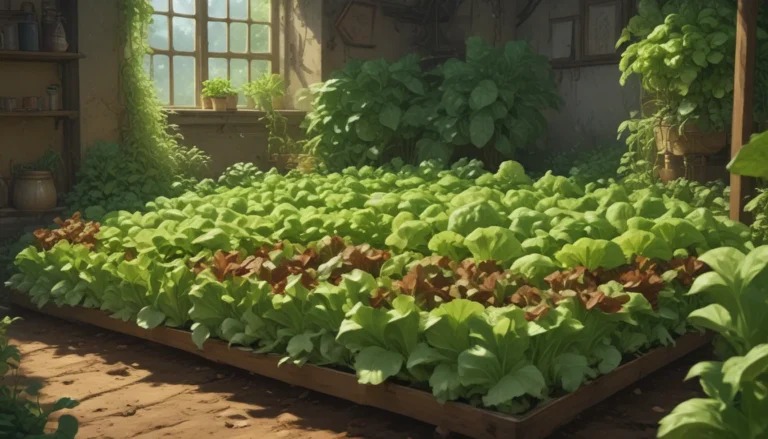An Ultimate Guide to Lithops Succulents: Exploring the Fascinating World of Living Stones

Are you ready to dive deep into the captivating world of lithops succulents? These tiny plants, also known as living stones, are not your average succulents. Instead, they mimic stones to survive in harsh climates, making them a unique and intriguing addition to any succulent collection.
With approximately 37 species of lithops and a plethora of subspecies, varieties, and cultivars to choose from, it’s no wonder these plants are a favorite among succulent enthusiasts. In this comprehensive guide, we will explore the characteristics of each lithops species, including body shape, flower color, growth habits, and unique features that set them apart.
So, whether you’re a seasoned succulent collector looking to expand your lithops collection or a newbie eager to learn more about these fascinating plants, get ready for an in-depth exploration of the world of living stones.
The Diverse World of Lithops Succulents
Let’s begin our journey by taking a closer look at some of the most intriguing lithops species, each with its own unique characteristics and charm. Here are just a few of the many lithops varieties you can find:
- Amicorum
- Aucampiae
- Bromfieldii
- Coleorum
- Comptonii
- Dinteri
- Divergens
- Dorotheae
- Francisci
- Fulviceps
- Gesinae
- Geyeri
- Gracilidelineata
- And many more…
These are just a few examples of the diverse range of lithops species available, each with its own distinct features and growth patterns. From the tiny Amicorum to the strikingly beautiful Dorotheae, there’s a lithops plant for every succulent lover.
Characteristics of Lithops Species
To help you better understand the unique characteristics of each lithops species, we’ll delve into the defining features that make these plants so special. Here are some key aspects to consider when exploring the world of living stones:
Body Shape
- Heart-shaped
- Double wedge-shaped
- Flat-topped or slightly convex
Flower Color
- Yellow
- White
- Pink
- Bronze
- Orange
Growth Habits
- Single head
- Clumps of multiple heads
- Solitary or in groups
- Small to very large sizes
Window Visibility
- Visible
- Partly obscured
- Hidden
Unique Markings
- Rubrications (dots, dashes, lines)
- Distinct margins
- Indistinct channels
- Dusky dots or spots
By understanding these characteristics, you can choose the perfect lithops plant that suits your preferences and aesthetic taste. Whether you’re drawn to the vibrant flowers of the Lesliei or the marbled appearance of the Marmorata, there’s a lithops species to match every style.
Growing and Caring for Lithops
Now that you’ve learned more about the diverse world of lithops succulents, it’s essential to understand how to care for these unique plants. Here are some essential tips for growing healthy and thriving lithops:
- Light Requirements: Lithops thrive in bright, indirect light. Place them near a sunny window or under a grow light for optimal growth.
- Watering Schedule: Water lithops sparingly, especially during their dormant period. Avoid overwatering, as these plants are adapted to arid environments.
- Soil and Potting: Use a well-draining soil mix specifically designed for succulents. Plant lithops in shallow, wide pots to accommodate their unique root structure.
- Temperature and Humidity: Lithops prefer warm, dry conditions. Maintain a temperature range of 60-80°F and avoid exposing them to cold drafts or high humidity.
- Fertilizing: Use a diluted, balanced fertilizer during the growing season to promote healthy growth. Avoid fertilizing during the dormant period.
By following these care guidelines, you can ensure that your lithops plants thrive and remain vibrant throughout the year. With proper care and attention, these unique succulents will reward you with their stunning beauty and fascinating growth habits.
Adding Lithops to Your Collection
Are you ready to add a living stone succulent to your collection? Whether you’re a seasoned succulent enthusiast or a newcomer to the world of lithops, there’s a perfect plant waiting for you. Explore the diverse range of lithops species, discover their unique features, and choose the perfect plant to enhance your succulent garden.
From the tiny Amicorum to the elegant Dorotheae, each lithops species offers a fascinating glimpse into the intricate world of living stones. So, take your time, explore the options, and select the perfect lithops plant to brighten up your space and showcase the beauty of these captivating succulents.
Final Thoughts
As we wrap up our exploration of lithops succulents, remember that these unique plants are not just ordinary succulents – they are living stones that mimic their surroundings to survive in harsh environments. With their diverse range of species, colors, and growth habits, lithops offer a fascinating glimpse into the world of succulent diversity.
So, whether you’re drawn to the vibrant flowers of the Lesliei or the marbled appearance of the Marmorata, there’s a lithops species to match every style and preference. Embrace the beauty and resilience of these incredible plants, and let the world of living stones transform your succulent collection into a vibrant and captivating display.
Now that you’ve learned more about the diverse world of lithops succulents, it’s time to embark on your own journey of exploration and discovery. Delve into the enchanting world of living stones, choose the perfect plant for your space, and let the beauty of lithops brighten up your succulent garden.
Happy planting, and may your succulent collection flourish with the unique charm and elegance of lithops succulents!





